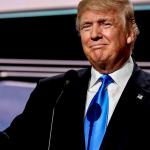Investments in emerging market economies generally carry a higher degree of risk than assets in the U.S. The risks inherent to many diversified emerging market mutual funds include emerging markets risk, stock market risk, country risk, regional risk, currency risk, political risk, and in some cases, active management risk and indexing risk. To compensate for the high degree of risk and volatility, emerging market mutual funds tend to offer higher potential returns over the long term.
Key Takeaways
- A developing or emerging market is an economy that is growing and has developing industries that are engaging with global markets.
- Investments in emerging markets are typically considered riskier than investments in developed economies like the U.S. and Europe.
- Emerging markets mutual funds offer the opportunity to participate in developing economies while limiting some risk through diversification.
- American Funds New World Fund (Class A), Vanguard Emerging Markets Stock Index Fund, T. Rowe Price Emerging Markets Stock Fund, and Invesco Developing Markets Fund (Class A) are examples of emerging markets mutual funds.
- Long-term investors seeking growth opportunities—and that have a higher tolerance for risk—might want to consider investing in emerging markets funds.
Emerging Markets Stocks
Diversified emerging market mutual funds provide investors with professionally managed exposure to companies doing business in rapidly developing foreign markets. They invest primarily in the common stocks of companies headquartered in countries such as China, Brazil, Russia, and India. The funds may also invest in debt securities or bonds issued by governments, government agencies, and corporations based in those countries.
It should be noted that even the definition of “emerging market economy” varies with world events. A few years ago, Egypt and Turkey were both on the radar of many emerging market investors. More recent events have, at least for now, driven those nations off many lists. These rapid changes may speak to the need for professionally managed exposure to emerging markets, and also to the risk tolerance required by investors in them.
That said, the following mutual funds spread their investments broadly enough that they can’t get utterly devastated by tomorrow’s news. They don’t just invest directly in the companies of emerging markets. They also invest in companies that do business in emerging markets.
$17.79 Trillion
China’s GDP, making it the second-largest economy in the world after the United States, as of 2023 data.
The American Funds New World Fund, Class A (NEWFX)
The American Funds New World Fund, Class A (NEWFX) seeks to provide long-term capital appreciation by primarily investing in common stocks of companies domiciled in emerging market economies. NEWFX was issued on June 17, 1999, by American Funds Distributors, Inc. As of September 30, 2024, NEWFX had $64.95 billion in total net assets and was advised by Capital Research and Management Company. NEWFX charges an expense ratio of 0.99%.
Under normal circumstances, NEWFX invests at least 35% of its total net assets in equity and debt securities of issuers primarily based in countries the fund’s adviser deems to be emerging market economies. As of September 30, 2024, NEWFX allocates 21.2% of its portfolio to the United States, 13.6% to China, 5.4% to Brazil, 14.5% to India, 2.4% to Japan, and 5.3% to France. Financials has the largest weight of any sector, accounting for 17.3% of the portfolio, followed by information technology, consumer discretionary, and industrial stocks.
NEWFX is best suited for highly risk-tolerant investors with a long-term investment horizon seeking exposure to stocks and bonds in emerging market economies.
The Vanguard Emerging Markets Stock Index Fund (VEMAX)
The Vanguard Emerging Markets Stock Index Fund (VEMAX) was launched on June 23, 2006, by Vanguard. A minimum investment of $3,000 is required to invest. Like most Vanguard funds, VEMAX charges a low expense ratio, relative to the average expense ratio of diversified emerging market funds, of just 0.14%. The fund is managed by the Vanguard Equity Index Group and seeks to provide investment results corresponding to the performance of the FTSE Emerging Markets All Cap China A Inclusion Index, its benchmark index.
To achieve its investment objective, VEMAX implements an indexing strategy. Under normal market conditions, the fund invests a sampling of its total net assets in common stocks of companies comprising the FTSE Emerging Markets All Cap China A Inclusion Index. VEMAX had total net assets of more than $116.1 billion as of September 30, 2024. The fund is heavily weighted toward China (29.9%), India (24%) and Taiwan (19.5%). Its biggest holdings are Taiwan Semiconductor, Tencent, and Alibaba.
The fund is seen as a high-risk, high-reward investment that is best suited for long-term investors with high degrees of risk tolerance seeking to gain exposure to common stocks of companies domiciled in developing countries. Additionally, VEMAX is suitable for investors who seek to diversify their portfolios.
The T. Rowe Price Emerging Markets Stock Fund (PRMSX)
Issued on March 31, 1995, the T. Rowe Price Emerging Markets Stock Fund (PRMSX) seeks to provide investors with long-term capital appreciation by investing in undervalued common stocks of companies domiciled in developing countries. PRMSX is advised by T. Rowe Price Associates, Inc. and sub-advised by T. Rowe Price International Ltd. The fund charges an annual expense ratio of 1.16%.
Under normal market conditions, PRMSX invests at least 80% of its total net assets in common stocks of emerging market companies. The fund implements a growth strategy and selects companies based on their capabilities of sustaining long-term earnings growth, cash flows, and book values. As of September 30, 2024, PRMSX had total net assets of $5.4 billion.
PRMSX is heavily weighted toward China (26.5%), India (18.4%), Taiwan (15.71%), and Brazil (7.61%). Although the fund offers diversified exposure to many sectors, it is heavily weighted toward common stocks of companies in the financial and information technology sectors, which make up almost 50% of its portfolio.
PRMSX is best suited for long-term, highly risk-tolerant, growth investors seeking to gain exposure to undervalued common stocks of companies in emerging countries. Investors may consider PRMSX if they want to add diversification to their portfolios, while potentially generating high returns over the long run.
Invesco Developing Markets Fund, Class A (ODMAX)
The Invesco Developing Markets Fund, Class A (ODMAX) was issued on Nov. 18, 1996. The fund is advised Invesco Advisers. Investors must put a minimum of $1,000 into this portfolio and are charged an annual net expense ratio of 1.26%. In September 30, 2024, the fund had $19.93 billion in portfolio assets.
The fund mainly invests in common stocks of companies in developing and emerging market economies. It normally invests at least 80% of its total net assets in equity securities of companies with business activities in developing markets. Its manager seeks to achieve its investment objective by investing in common stocks of emerging companies expected to grow at a faster rate than world gross domestic product (GDP).
Stocks from China account for 21.3% of the portfolio. India (18.2%), Taiwan (14.3%), and Mexico (8.5%) are the next largest holdings. In terms of sectors, more than half of the portfolio is invested in information technology, consumer discretionary, and financials.
Like the other emerging markets funds mentioned here, the Invesco Developing Markets Fund, Class A fund is best suited for growth investors with long-term investment horizons seeking capital appreciation by investing in a portfolio of equity securities in developing and emerging markets economies.
Read the original article on Investopedia.


